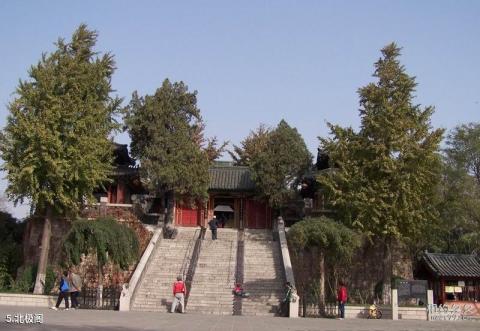
Introduction to Beiji Pavilion: Beiji Pavilion is located on the north shore of Daming Lake. It was formerly known as Beiji Pavilion and Beiji Terrace, also known as Zhenwu Temple and North Temple. It is the largest existing Taoist temple in Jinan City and worships the northern Taoist god Zhenwu.
The Arctic Pavilion was first built in the early Yuan Dynasty and Yongle in the Ming Dynasty. It was rebuilt twice in the Chenghua period and many times in the Qing Dynasty. It has experienced more than 700 years of vicissitudes. The North Pole Temple stands majestically behind the city and faces the lake. The temple base is a 7-meter-high stone-inlaid earth platform, which was originally the site of Fanghe Pavilion. The 36 bluestone steps in front of the door are a high point on the north shore of Daming Lake. Standing on the temple platform, the view It is open and you can overlook the urban area in the south: tall buildings and skyscrapers, and the mountains line the screen; you can overlook Minghu Lake in the distance: green willows stained with smoke and majestic waves.
The Beiji Temple complex covers an area of 1,078 square meters. It is not large in scale, but it is a complete ancient building complex consisting of the main hall, the back hall, the veranda, the bell tower, the drum tower, and the entrance hall. The most famous Taoist priest in the temple is Li Zuiqin from the Ming Dynasty. He was both a master of playing the qin and a talented poet. He often played the qin and recited poems on the lake with the literati and celebrities of the time. After Li Zuiqin's death, the famous poet Fan Dong also printed and published his poems. This is exactly: "Quancheng has been a city of poetry since ancient times. Haiyou has had Li Pavilion since ancient times. If you ask how many poems there are in Minghu Lake, the Taoist priests in Beimiao are famous for their poems."
